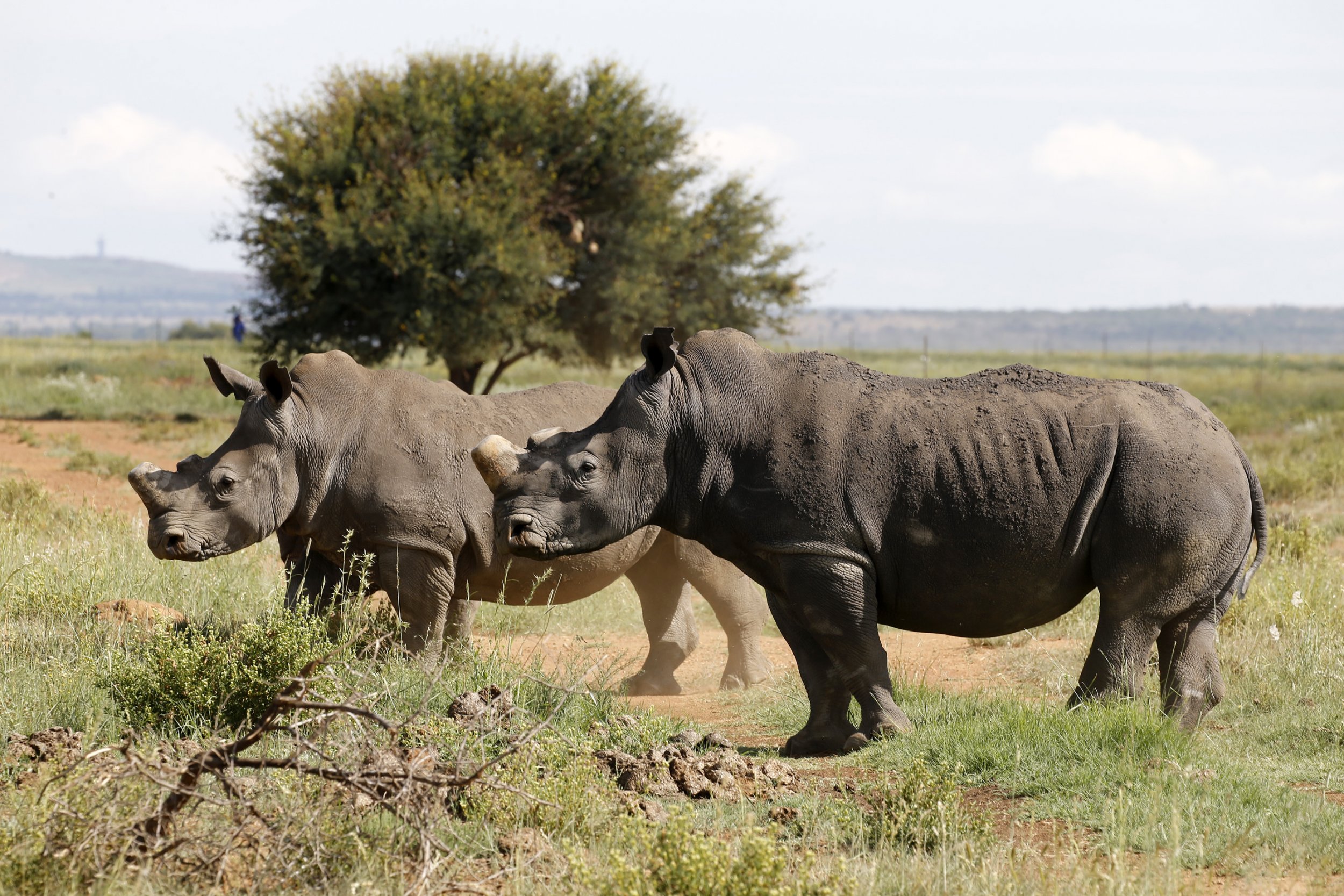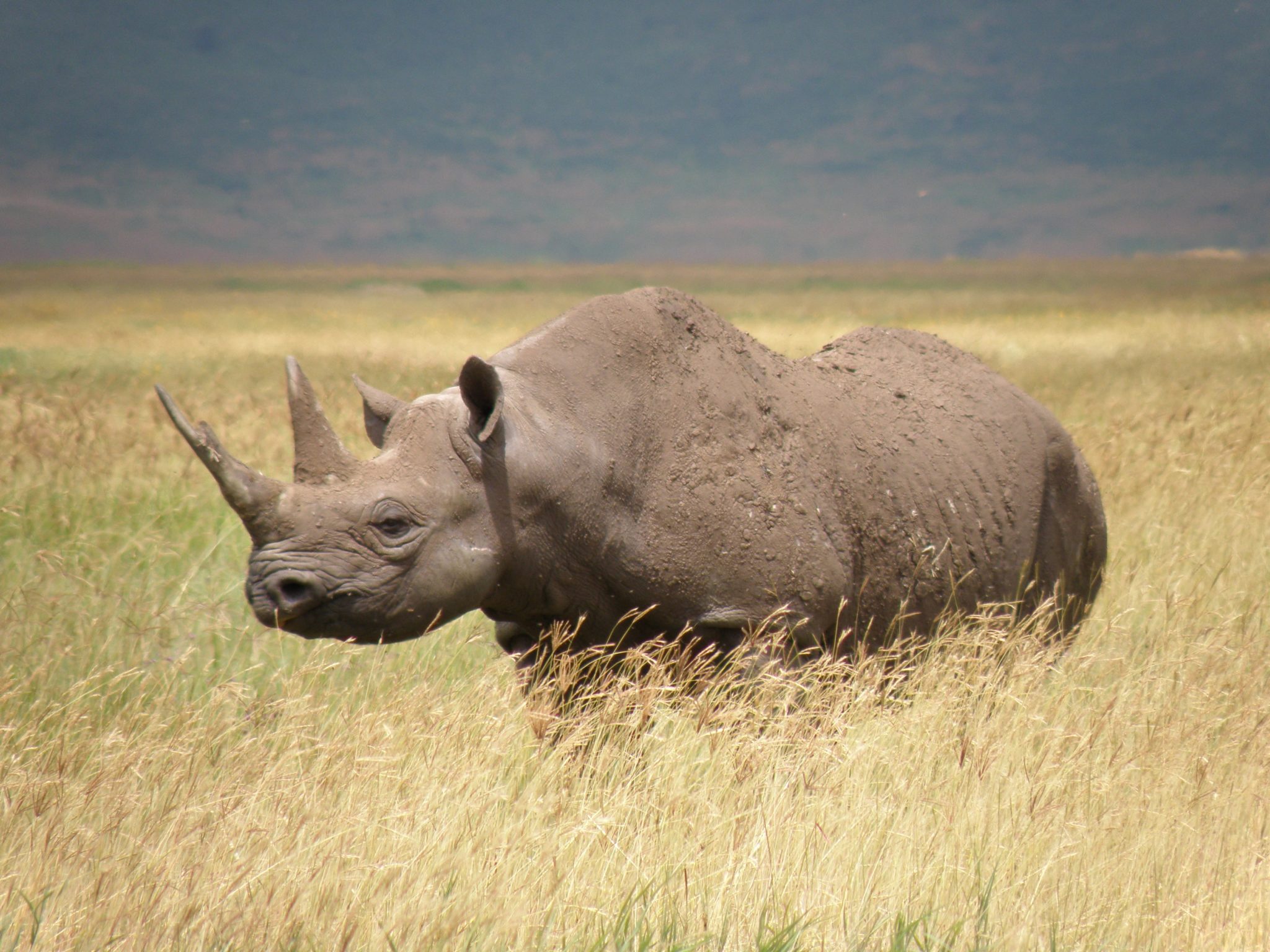

The name means "double-horned rhinoceros".

The species was first named Rhinoceros bicornis by Carl Linnaeus in the 10th edition of his Systema naturae in 1758.

The IUCN estimates that there are 3,142 mature individuals remaining in the wild. Three subspecies have been declared extinct, including the western black rhinoceros, which was declared extinct by the International Union for Conservation of Nature (IUCN) in 2011. The species overall is classified as critically endangered (even though the south-western black rhinoceros is classified as near threatened) and is threatened by multiple factors including poaching and habitat reduction. These species are now sometimes referred to as the square-lipped (for white) or hook-lipped (for black) rhinoceros. The word "white" in the name "white rhinoceros" is often said to be a misinterpretation of the Afrikaans word Template:Wiktafr ( Dutch Template:Wiktnld) meaning wide, referring to its square upper lip, as opposed to the pointed or hooked lip of the black rhinoceros. The other African rhinoceros is the white rhinoceros ( Ceratotherium simum). It is the only extant species of the genus Diceros. Although the species is referred to as black, its colours vary from brown to grey. The black rhinoceros, black rhino or hook-lipped rhinoceros ( Diceros bicornis) is a species of rhinoceros, native to eastern and southern Africa including Angola, Botswana, Kenya, Malawi, Mozambique, Namibia, South Africa, Eswatini, Tanzania, Zambia, and Zimbabwe. Extant & Assisted Colonisation (resident)


 0 kommentar(er)
0 kommentar(er)
